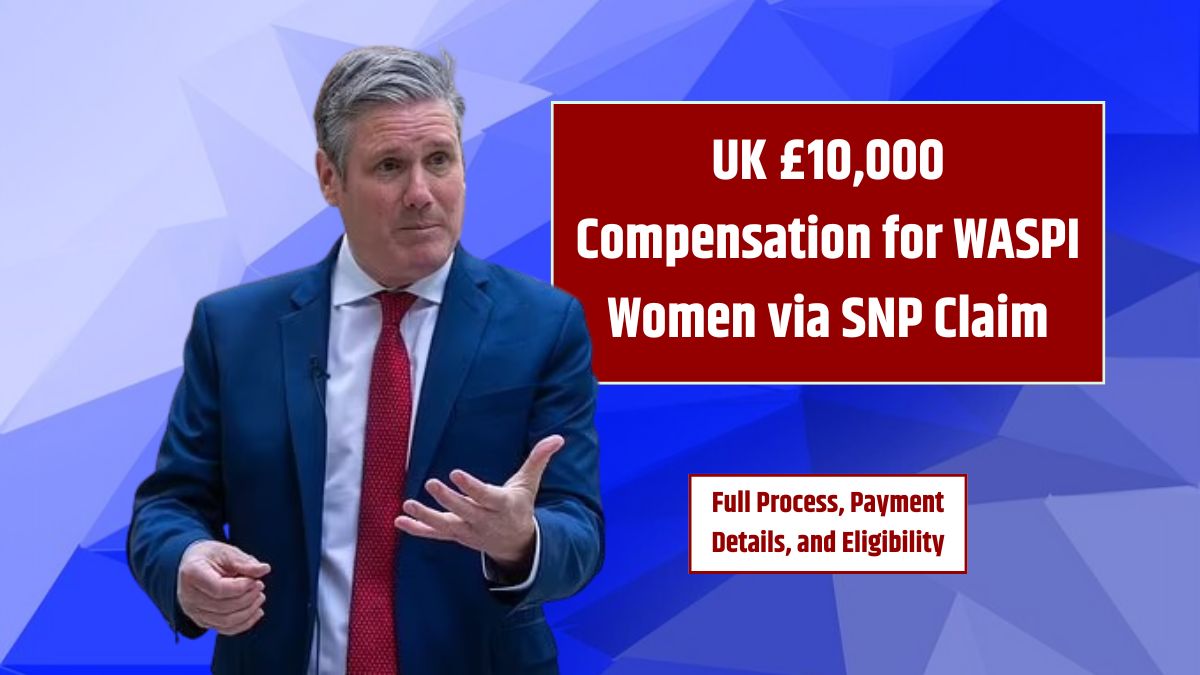The campaign by Women Against State Pension Inequality (WASPI) has taken a major step forward, with growing political support and public awareness pushing for compensation. Now, with the Scottish National Party (SNP) backing a £10,000 payment proposal, women born in the 1950s who were affected by state pension age changes could finally receive some justice. If you or someone you know is part of this group, this article breaks down exactly what this payment is, who qualifies, how to claim it, and when payments could start.
Overview
| Key Information | Details |
|---|---|
| Compensation Amount | £10,000 (may vary based on circumstances) |
| Eligibility | Women born between 6 May 1950 and 5 May 1960 |
| Payment Schedule | Phased payments expected starting 2025 |
| Claim Process | Through the Department for Work and Pensions (DWP) |
| Documentation Required | Proof of age, evidence of financial/emotional hardship |
| Political Support | Strong support from SNP; pressure on UK government to act quickly |
WASPI Campaign
WASPI was formed in response to changes in the state pension age (SPA), which saw women’s retirement age rise from 60 to 66 with little warning or preparation time. Many women had already made financial and life plans based on retiring at 60, only to discover their pensions would be delayed by several years.
This change led to widespread financial distress and emotional stress for hundreds of thousands of women. The campaign argues that while equalising the pension age was lawful, the way it was communicated and implemented was not.
£10,000 Compensation Means
The proposed £10,000 compensation isn’t a random figure—it reflects the approximate loss experienced by many of these women in delayed pension payments and related costs. While not all women will receive the full amount, it’s a major step towards financial recognition of their situation.
This payment is not just about money—it’s a way to acknowledge the emotional impact of being forced to work longer, often without sufficient time to plan, adjust, or save.
Who Is Eligible?
- You must be a woman born between 6 May 1950 and 5 May 1960.
- This group is identified as most affected by the sudden rise in the state pension age.
Proof of Impact
To qualify, you will need to show how the SPA changes caused:
- Financial hardship (loss of income, debt, etc.)
- Emotional distress (mental health issues, stress, etc.)
This could involve submitting bank statements, medical documents, and other relevant proof.
Final Criteria Pending
The Department for Work and Pensions (DWP) will determine final eligibility details, including who receives full or partial payments.
When Will Payments Begin?
Although there was initial hope for payments to start in mid-2024, election delays and administrative complications have pushed the timeline. As of now:
- Payments are expected to begin in 2025, though no firm date has been announced.
- They will likely be rolled out in phases, prioritising those most severely impacted.
The SNP has publicly committed to fast-tracking the payments once all systems are in place.
How to Claim
If you think you qualify, here’s how the claims process will work:
Step 1
- Start by getting in touch with the Department for Work and Pensions.
- Check their website or call the helpline once the official claim process is launched.
Step 2
You’ll need:
- Proof of birth date (passport, birth certificate)
- Evidence of lost income or career disruption
- Medical records or statements documenting emotional stress
- Any prior complaints made regarding SPA changes
Step 3
- Fill out the official claim form once available
- Double-check all sections for accuracy
- Include every required document to avoid delays
Step 4
- Keep a copy of your submission
- Check with the DWP regularly to track your claim status
- Follow up if there’s no response within the stated time frame
Bigger Picture
While £10,000 offers meaningful relief, the broader campaign is about more than just compensation. WASPI continues to push for justice and a public acknowledgment of how these changes were handled. Their efforts have brought national attention to how policy changes should be communicated clearly and with enough warning.
More importantly, this movement serves as a warning for future pension reforms—people must be given time to plan, especially when it involves their financial future after retirement.
FAQs
Who qualifies for WASPI compensation?
Women born between May 6, 1950, and May 5, 1960.
How much compensation is being offered?
Up to £10,000, depending on individual circumstances.
When will WASPI payments start?
Payments are expected to begin in 2025 in phases.
How do I apply for WASPI compensation?
Through the DWP with proof of impact and identity.
Do I need legal help to apply?
No, but legal aid or guidance can help with complex cases.

















